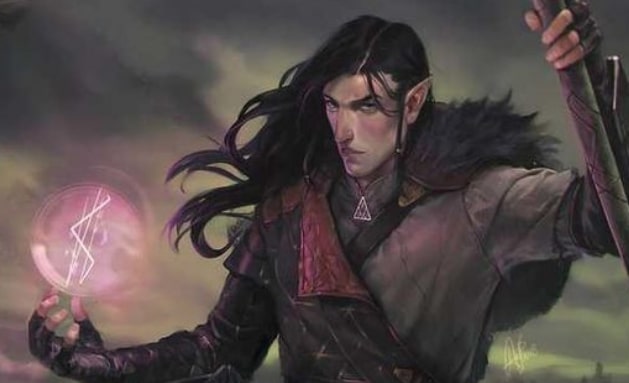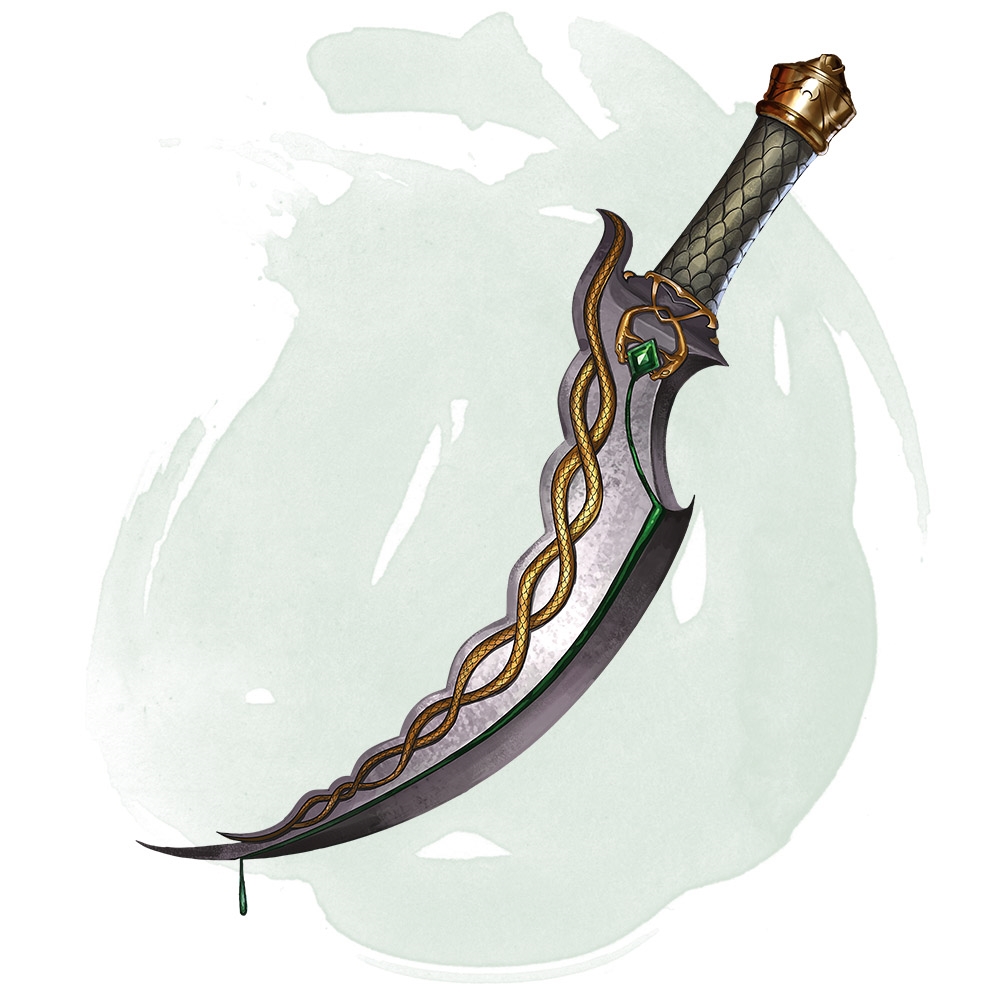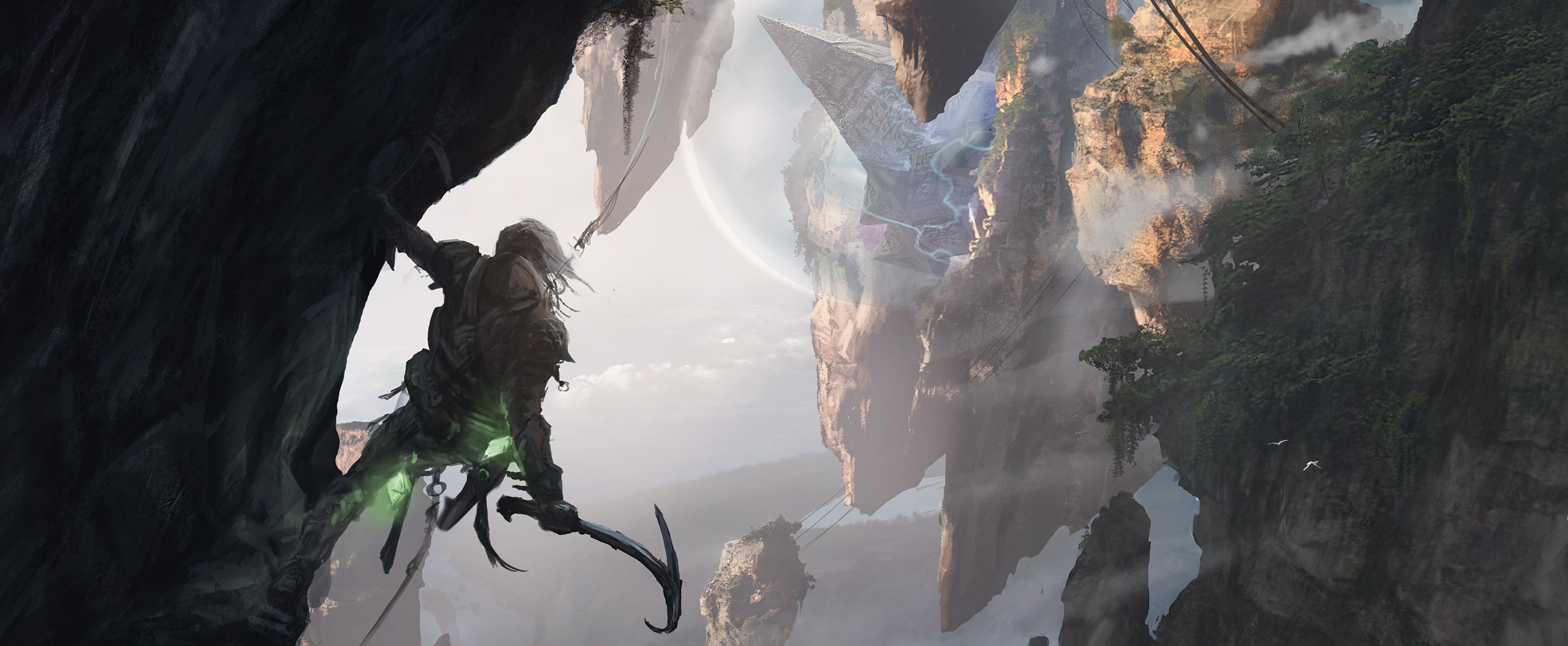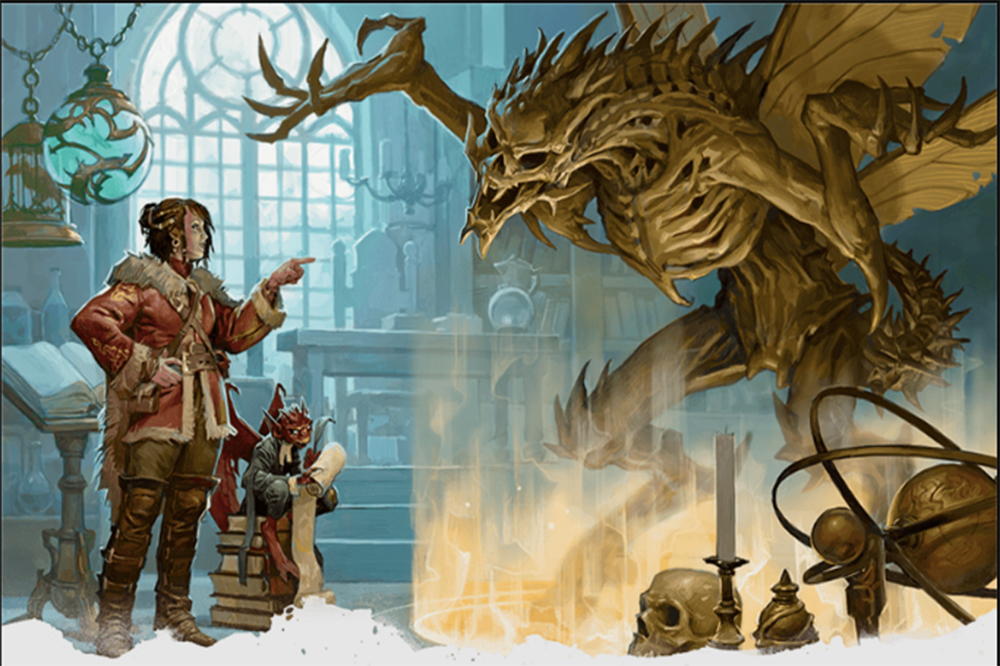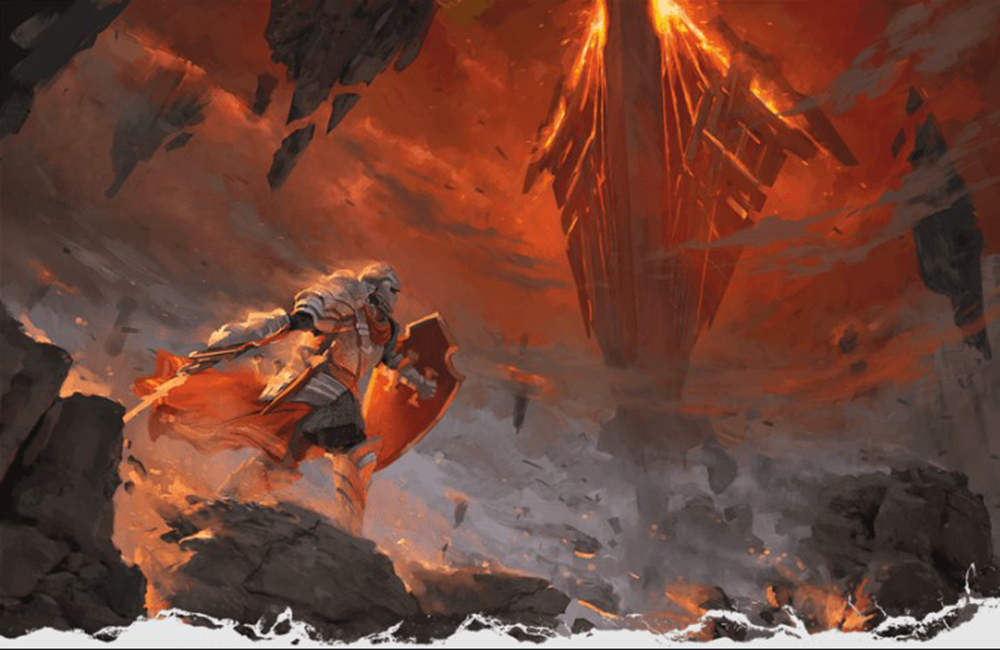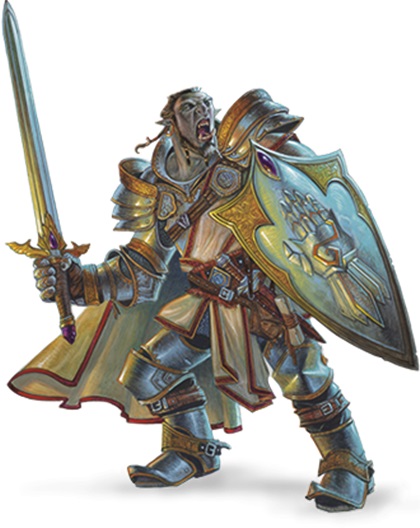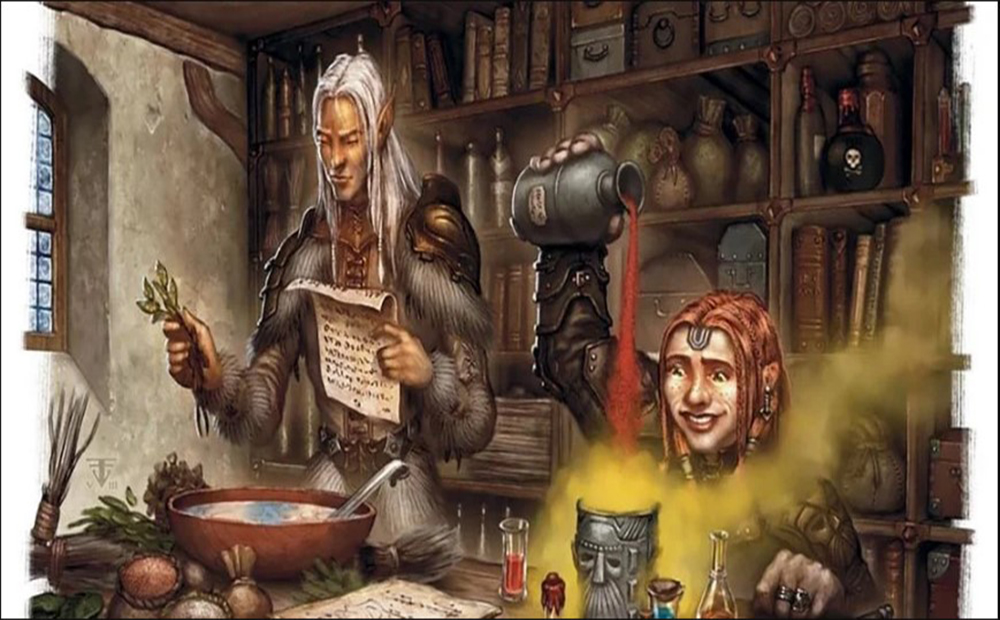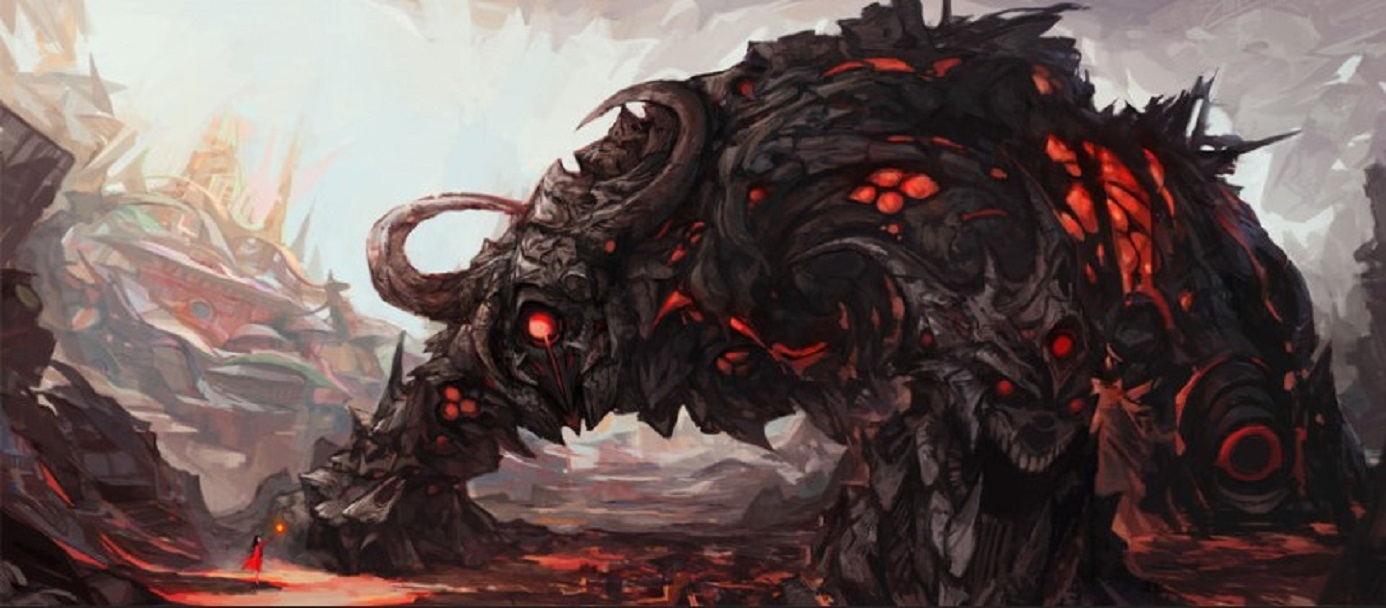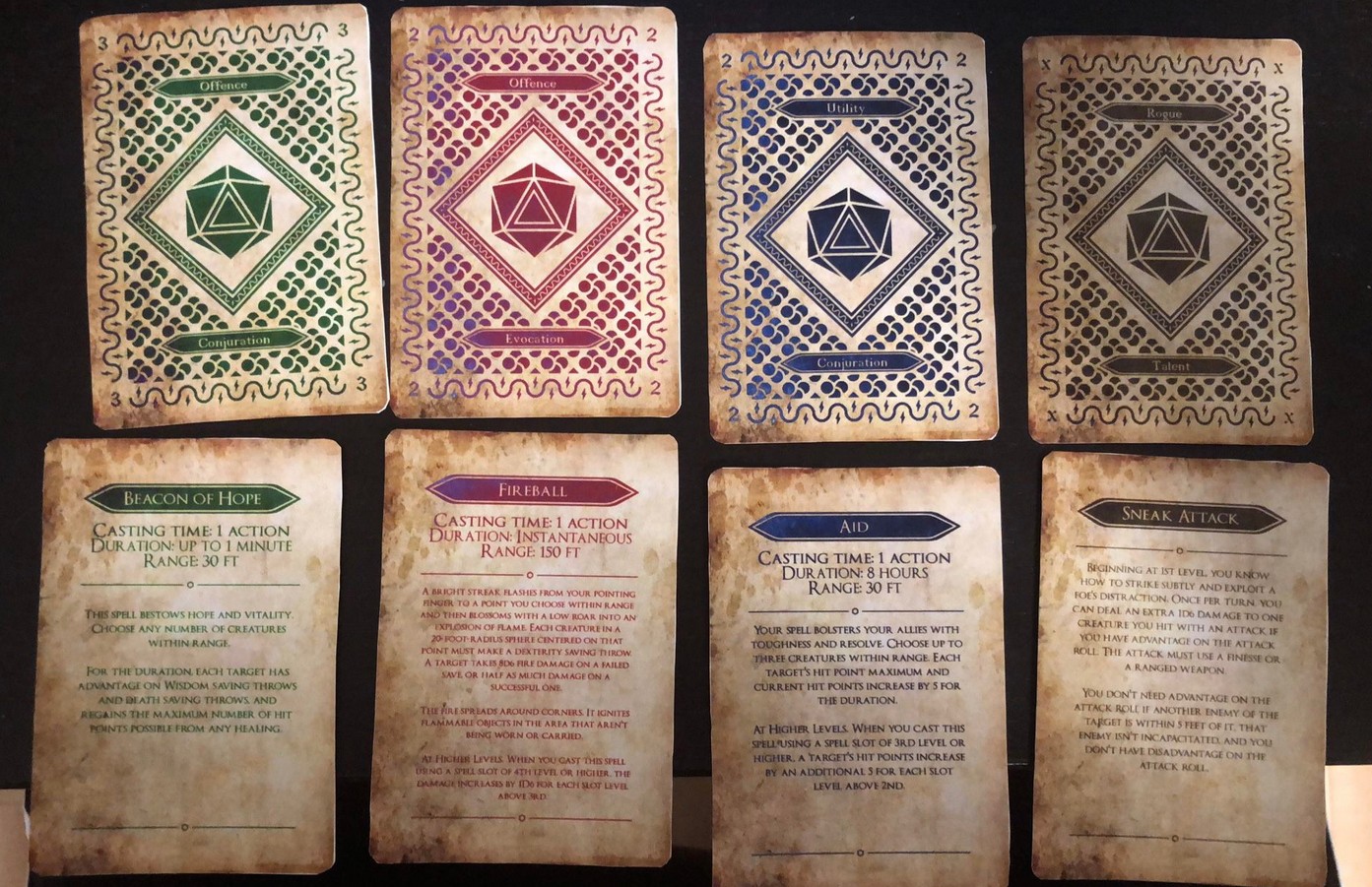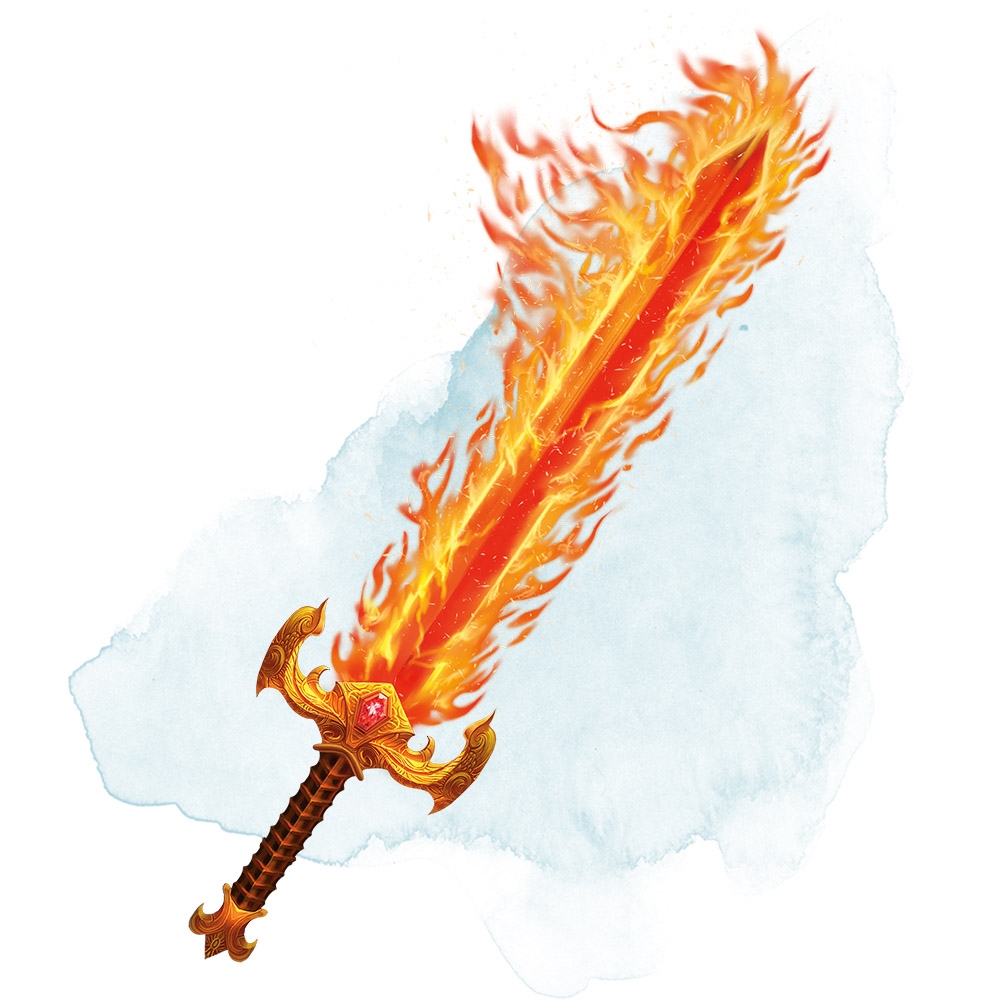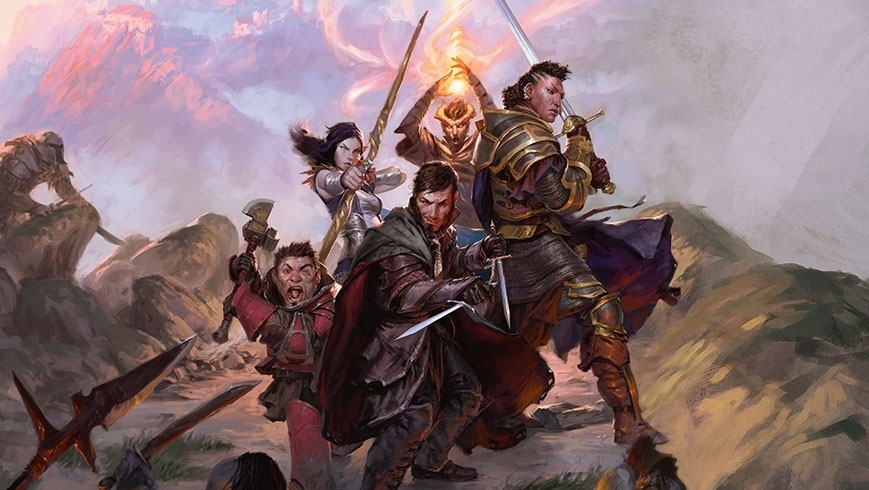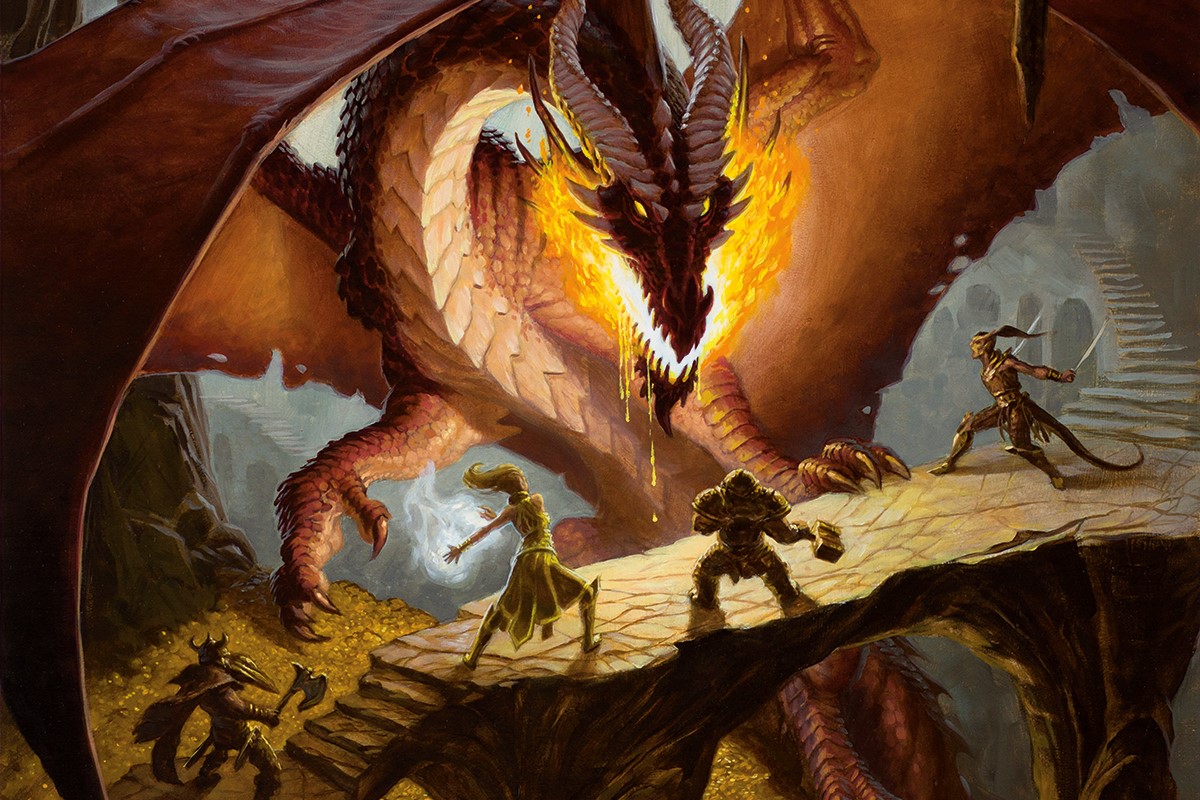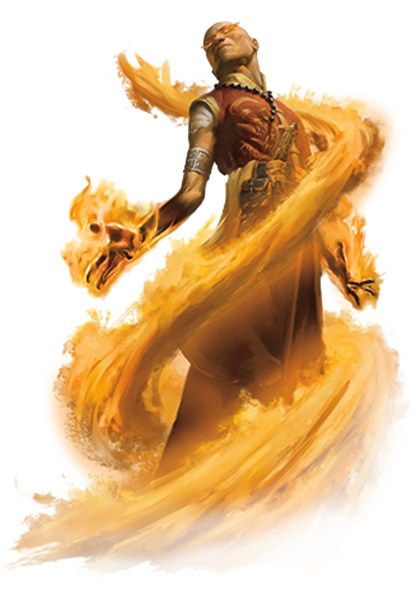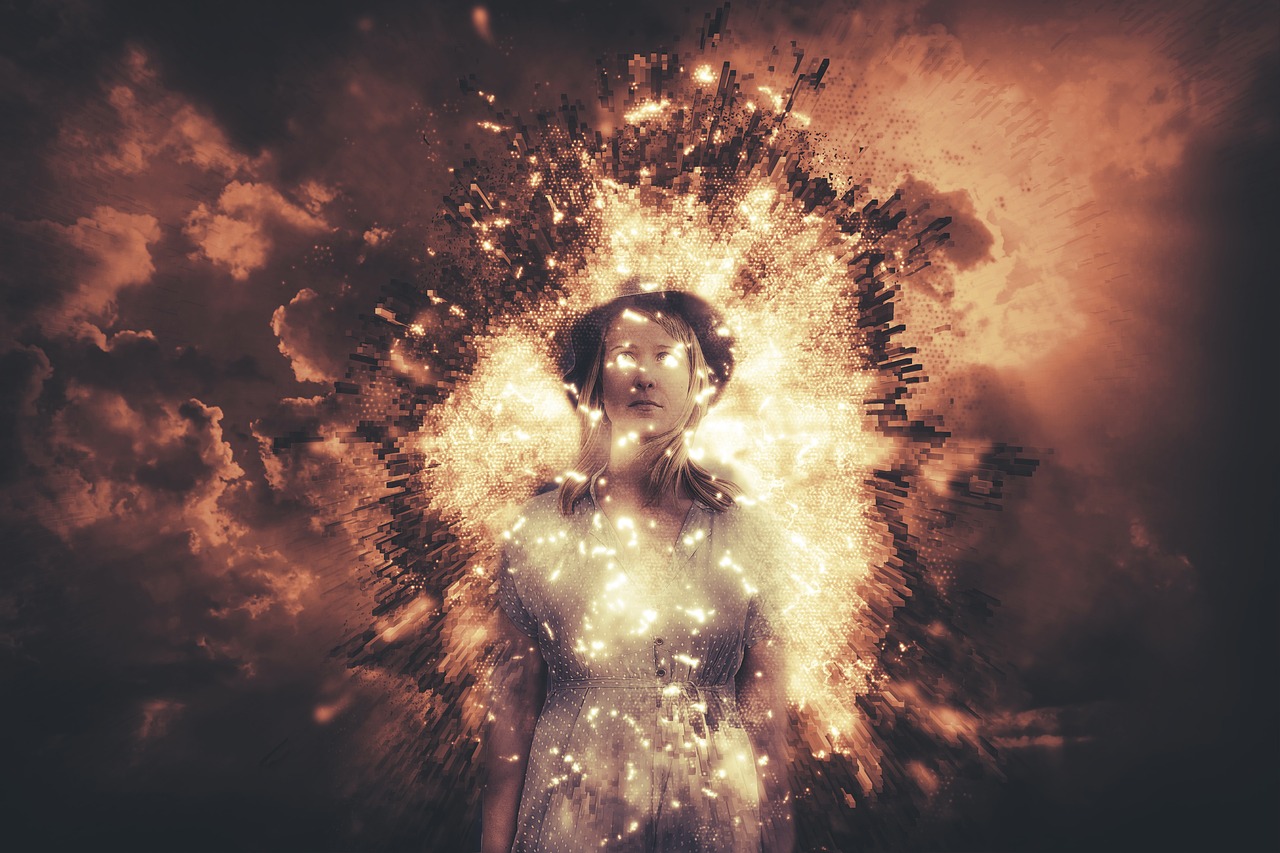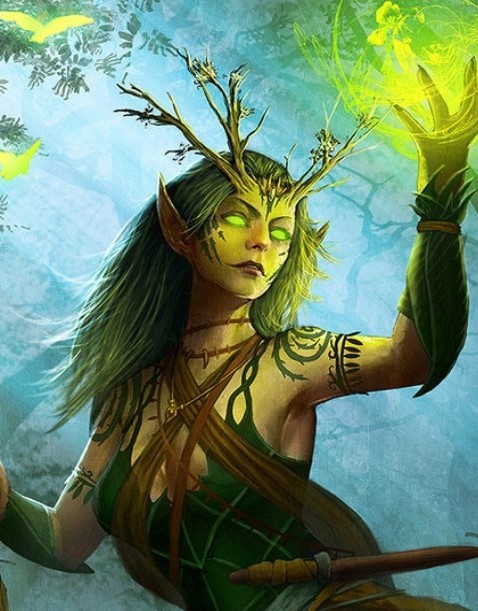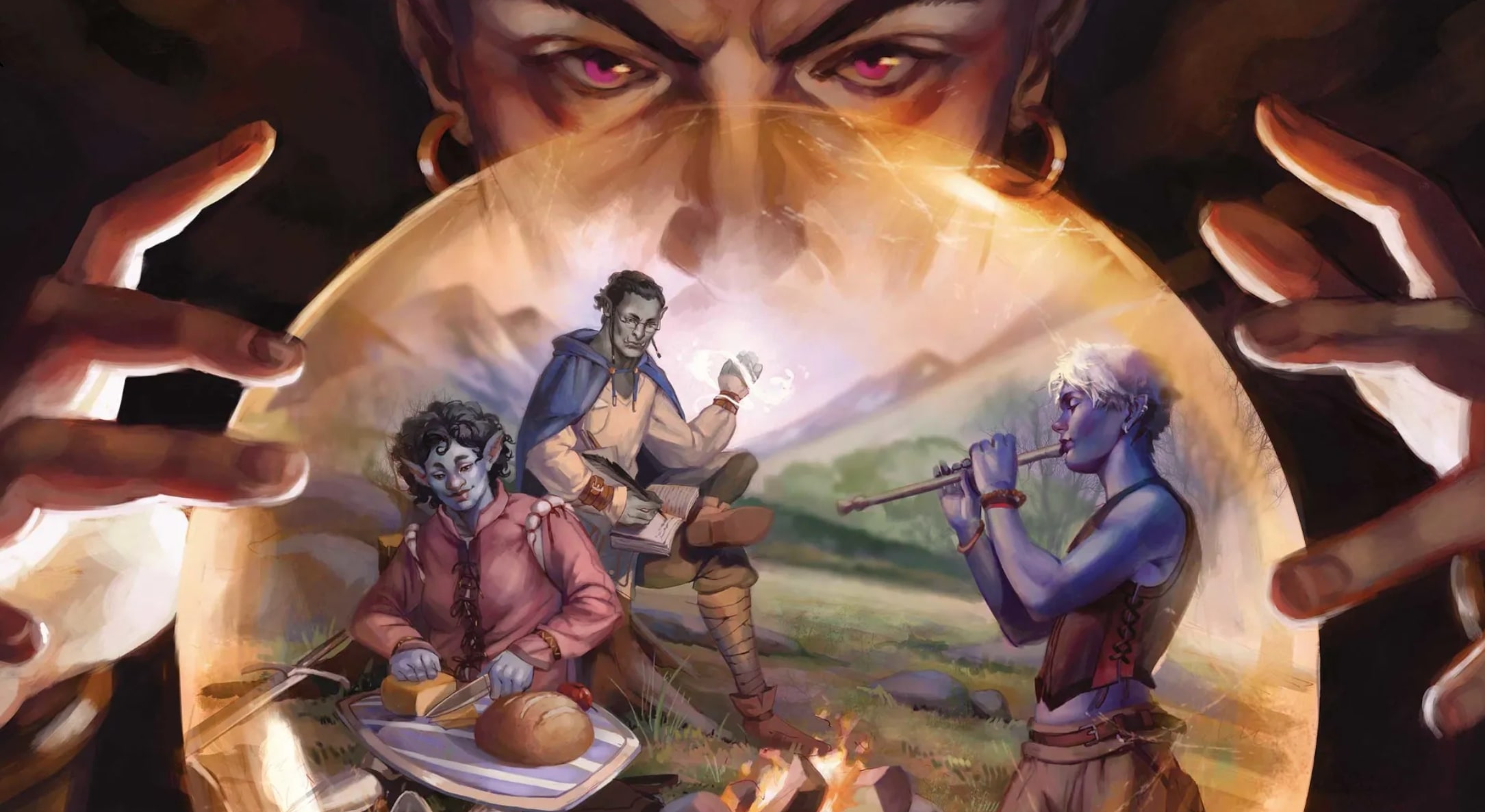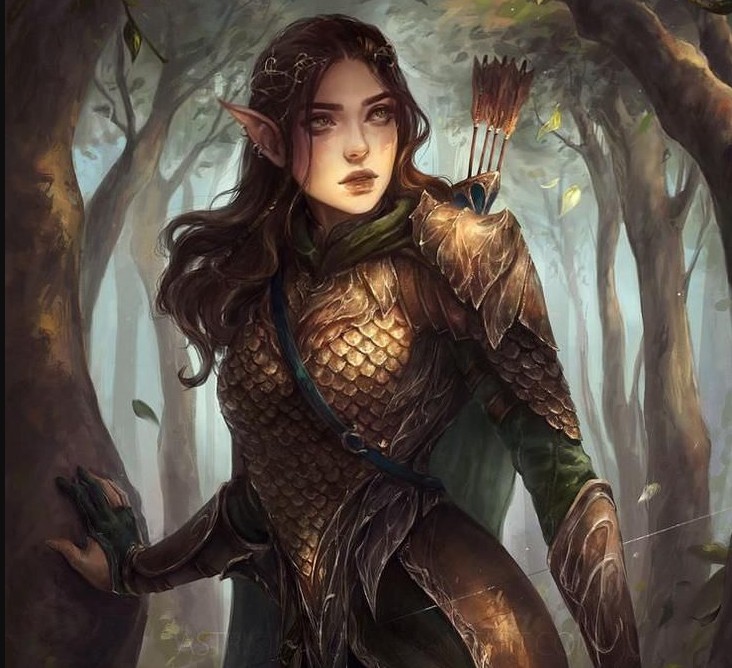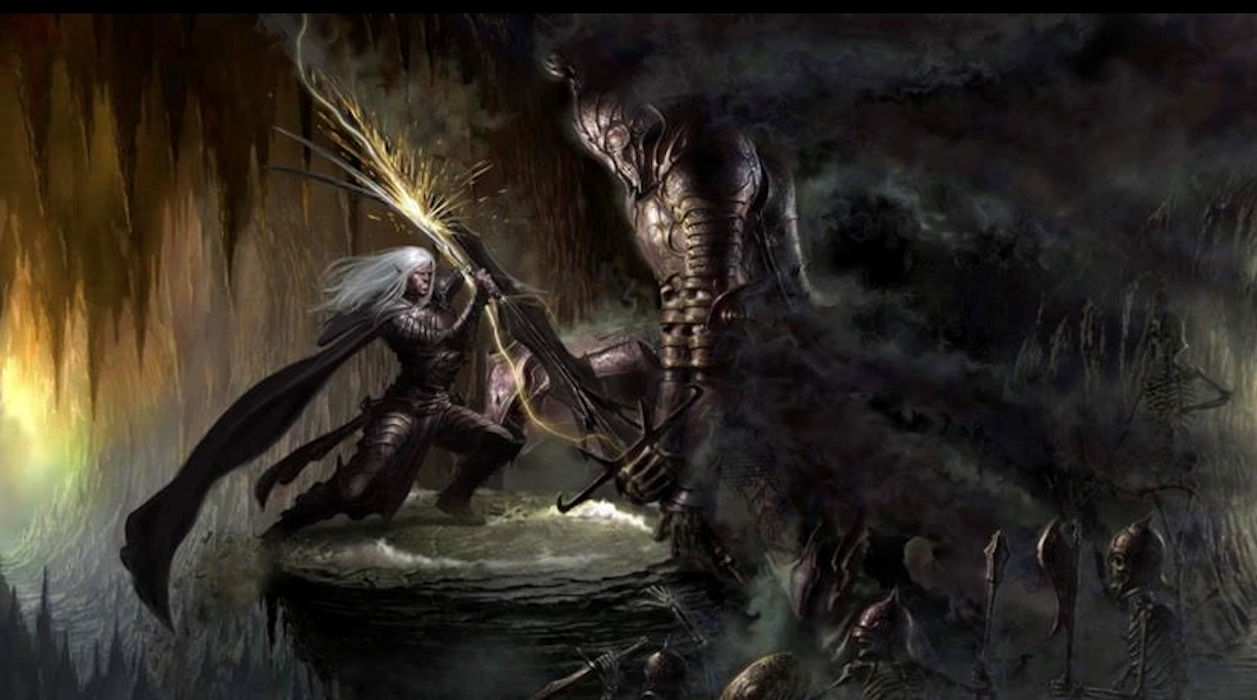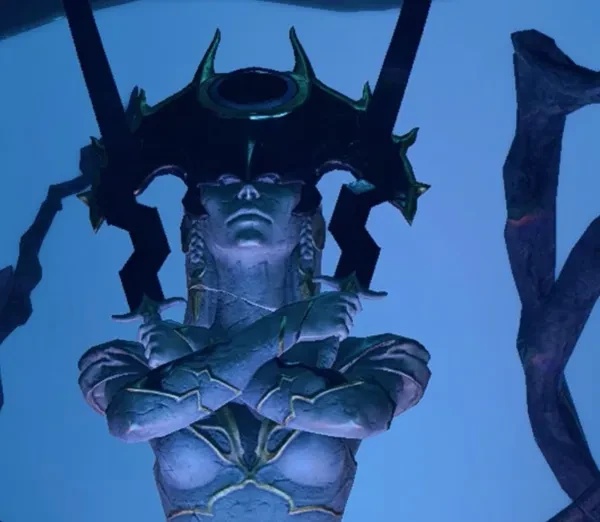
Death, a constant in the Dungeons & Dragons multiverse, is shaped by a pantheon of powerful deities. From the benevolent to the malevolent, these gods hold dominion over life's end, influencing mortal realms and the afterlife. Let's delve into the ranks of these divine entities, exploring their power and influence on the D&D cosmos.
#8. Loviatar
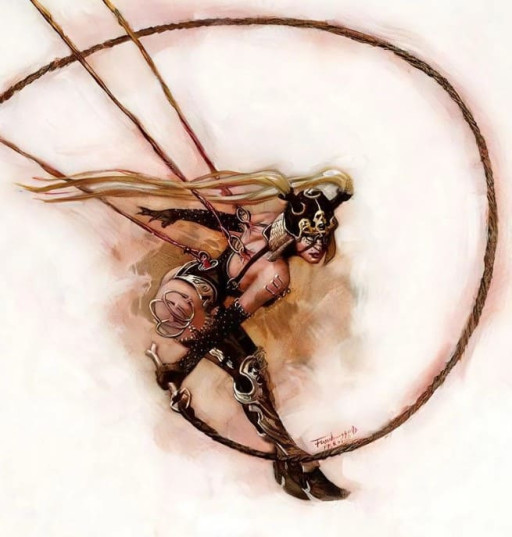
Loviatar, sometimes called “The Lady of Pain”, was the goddess of both pain and torture. Unlike most followers of all stripes, she has moved between multiple masters. She served Bhaal for a time but her obsessions deviated slightly from his in that she took pleasure in delaying death for the sake of inflicting as much misery on her victims as possible. She was later swayed close to Shar but eventually fell under Bane, whose portfolio of tyranny had many uses for acts of torture.
She’s certainly unafraid of her peers as well, having delivered long and brutal revenge on rival demigod Talona as revenge for killing her sister.
- Personality
Loviatar was famously cold and it would be considered a miracle by either mortal or the divine to be able to reach her emotionally. She was so incredibly absorbed by the pursuit of inflicting pain that she would sometimes be naive to other people’s capacity for self-sacrifice and good deeds.
- Followers & Worshippers
Loviatans were known to be beautiful and, oddly enough, good actors so as to better psychologically manipulate their victims. They often engaged in self-flagellation, whipping themselves to inflict pain as a form of prayer.
- Reasons for choosing Loviatar
- Is totally unavailable to emotional manipulation
- Any pain inflicted in an effort to slay her would be considered pleasurable
- Capable of capturing and torturing a rival demigod
- God Details
- Power: Demigod
- Alignment: Lawful Evil
- Symbol: Nine-tailed barbed scourge
- Home plane: Faerûn
- Realm: Wherever her master resides
- Portfolio: Pain, Torture
- Domains: Death
- Channel Divinity: Touch of Death
#7. Vecna
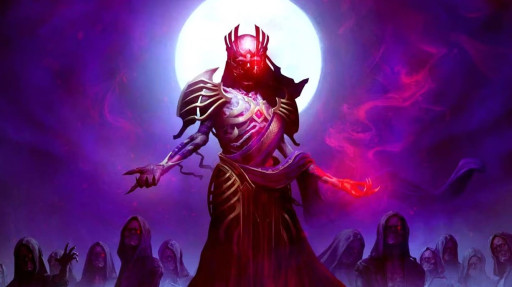
Vecna was once a mortal who had become one of the most powerful wizards on Oerth. There are several theories of how he eventually attained his lichdom. One theory is that the demon prince Orcus taught him how to achieve undeath. Another claims that he had experimented on hundreds of innocent mortals to formulate a ritual to defeat mortality.
Regardless, after years of consolidating magical power, he’d been betrayed by not one, but two lieutenants at different times, the latter of whom had successfully cut off Vecna’s left hand and stabbed his left eye. After several centuries, Vecna’s followers helped him rise to the status of demigod.
- Personality
Vecna may have begun as a mortal, but his pursuit of power was a godly feat of ambition. And as the most infamous lich in history, his intellect could be doubted by no one, making him especially arrogant as well. He had an obsession around finding the secret of every being in existence so as to understand how to destroy them.
- Followers & Worshippers
The Cult of Vecna is an evil and secretive cabal of clerics that exploit secrets to acquire power (Vecna would be so proud). Its upper ranks, the Halls of Secrets, believe that knowledge is the most pure form of power.
- Reasons to choose Vecna
- He is unrivaled in power among all liches and other undead
- He is on the short list of mortals to achieve immortality and godhood, even if it was just demigodhood
- It is said he can always feel when someone disclosed a secret that could affect hundreds of people
- God Details
- Power: Demigod
- Alignment: Neutral Evil
- Symbol: Hand with eye in the palm
- Home plane: Oerth
- Realm: Citadel of Cavitius
- Portfolio: Evil secrets
- Domains: Death, Arcana, Knowledge
- Channel Divinity: Arcane abjuration, Touch of Death, Knowledge of the Ages, Read Thoughts
#6. Myrkul
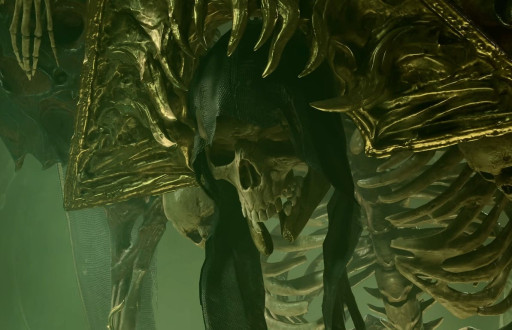
Myrkul had adventured with Bane and Bhaal as a talented necromancer. The trio’s journey eventually led them to Jergal, God of Death at the time, who willingly distributed his portfolio among the three of them and Myrkul was given purview over the dead (as opposed to Bhaal’s jurisdiction over the act of killing).
Myrkul has made multiple attempts at nefarious plots ever since, not the least of which being an attempt to steal the Tablets of Fate from the overgod Ao. He was punished alongside many other gods by being sent to live in the mortal world, a period referred to as the Time of Troubles.
- Personality
Once his image was associated with death, Myrkul had grown very intent on keeping himself in the backs of everyone’s mind. He relished the fear that he could evoke in people all across the world, though he wasn’t as aggressive as his two former adventuring buddies.
- Followers & Worshippers
Myrkul has relatively few worshippers as he is so heavily associated with the difficulties of getting old. They are often undertakers who would rarely reveal their worship. In fact, they’re known to spread rumors of how merely touching them could kill someone, further ensuring that fear of Myrkul stayed widespread.
- Reasons to choose Myrkul
- Already holds a tight grip of fear across civilization
- Was capable of attempting to steal from the overgod Ao
- Can raise undead at will
- God Details
- Power: Lesser Deity
- Alignment: Neutral Evil
- Symbol: White human skull
- Home plane: The Gray Wastes
- Realm: The Bone Castle
- Portfolio: Death, decay, old age, exhaustion, dusk, autumn
- Domains: Death
- Channel Divinity: Touch of Death
#5. Bhaal
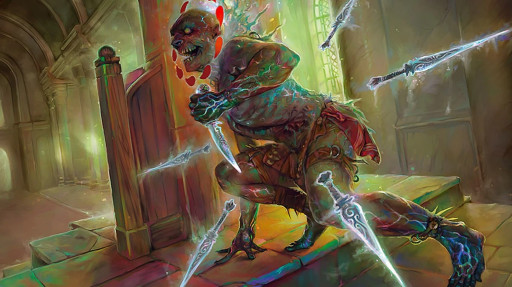
The 2nd member of The Dead Three to include Death in their domain, Bhaal used to be a mortal adventurer with Bane and Myrkul. The three of them sought out Jergal and negotiated a splitting of his domains among them. After Bane and Myrkul, Bhaal was left with the domain of Murder (not to be confused with Myrkul’s domain of the dead).
This god of murder is a terribly sadistic and malicious avatar of death. The very presence of the living fills him with an urge to end them. Bhaal and his Bhaalspawn are responsible for untold violence and chaos and his agenda doesn’t go far beyond the opportunity for more bloodshed. Making as many enemies as one would expect, Bhaal eventually was slain by a man named Cyric but was restored through the death of his progeny, the Bhaalspawn.
- Personality
Bhaal is obsessed with death, specifically in causing it. Bhaal is cruel, violent, and hateful and only rarely deviates from bloodthirst if cold calculation can lead him to more terribly sanguine opportunity.
- Followers & Worshippers
Bhaalists, as they’re often called, are a disparate network of branches that consider murder both a form of worship as well as just plain fun. He had also sired many children with mortal women that were later referred to as the Bhaalspawn, whose lives are taken to restore him should he ever be slain.
- Reasons to Choose Bhaal
- He possesses an incomparable willingness to commit violence
- He has been slain before (in the Time of Troubles) and still managed to come back
- Controls an army of bloodthirsty cultists
- God Details
- Power: Lesser deity
- Alignment: Chaotic Evil
- Symbol: Skull surrounded by a ring of bloody droplets
- Home Plane: Gehenna
- Realm: Throne of Blood
- Portfolio: Murder
- Domains: Death
- Channel Divinity: Touch of Death
#4. Jergal
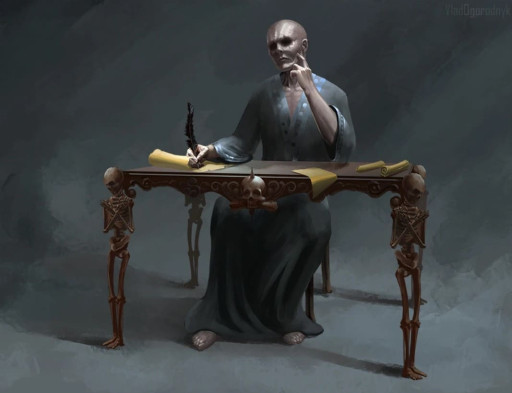
Lord of the End of Everything, Jergal was the original God of Death once there were other deities in the picture beyond just Ao, Selûne, and Shar. Oddly enough, Jergal left his station because he got bored, ceding his portfolio among Bane, Myrkul, and Bhaal when they came to his door. Then he just kicked back and started advising his successors, as one of them fell to the next multiple times.
It’s said that after the Second Sundering, Jergal could be found in Sylvania playing skull bocce in an undead club called The Afterparty.
- Personality
Jergal is dispassionate, non-combative, and wise. He has very little ambition and is dedicated to the ideals of death for their own sake, willing to put himself aside to uphold them on principle.
- Followers & Worshippers
The Church of Jergal is congregated by The Scriveners of Doom who all shave their heads and wear grey robes. They toil endlessly in listing the ways in which people died and to where they departed afterwards.
- Reasons to choose Jergal
- Is the most aligned and dedicated to the ideal of death
- Despite not being particularly aggressive, still boasted the power of a greater deity
- Is incredibly experienced being so much older than most other gods
- God Details
- Power: Greater Deity
- Alignment: Lawful Neutral
- Symbol: Skull biting a scroll
- Home plane: The Gray Wastes
- Realm: The Bone Castle (before his successors took it over)
- Portfolio: Records of the dead
- Domains: Death, Knowledge
- Channel Divinity: Knowledge of the Ages, Read Thoughts, Touch of Death
#3. The Raven Queen
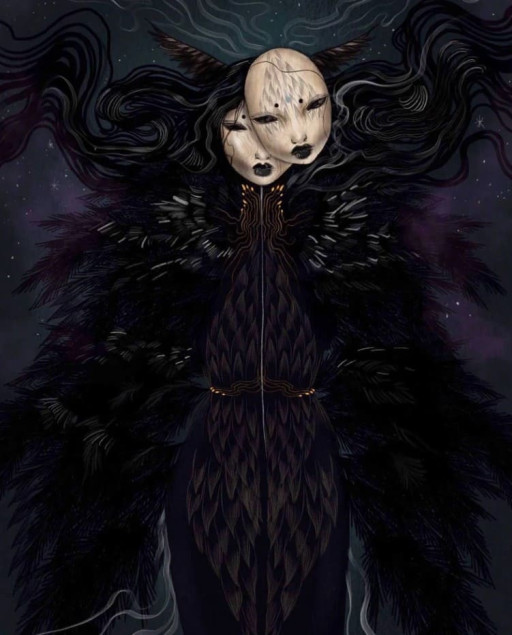
Ages ago, the Raven Queen had been an elven queen of the Feywild who sought to bring an end to the conflict between Corellon, leader of the Elven pantheon, and Lolth, a goddess of secrets and assassins. To gain leverage, she conducted a mighty ritual that would allow her to attain godhood, but she was betrayed by greedy wizards who wanted power for themselves. Her plan exposed, both of the warring gods deemed that for her conspiracy she would be condemned to the Shadowfell and she would be erased from the memories of elven kind.
Sending out newly acquired minions and raven familiars across the multiverse to gather the memories and mementos of tragic events, she constructed a new identity for herself. Some say this serves a cosmic purpose, some say she’s simply gone mad. Either way, she is reliably interested in the grieving and despondent.
- Personality
The Raven Queen is reclusive by design, given her enigmatic nature. Considered a lawful-neutral deity, she can at least take credit for not being involved in forcing tragic events for the sake of memories when she very much could. Her involvement in the multiverse is essentially self-interested, though not malicious.
- Followers & Worshippers
The Shadar-Kai of the Shadowfell are well-known worshippers of The Raven Queen, said to come to her when they perish. She is otherwise revered by anyone seeking consolation in the face of great loss.
- Reasons to Choose The Raven Queen
- Capable of keeping the demon lord Orcus at bay from the Shadowfell
- Can harvest souls and tap into memories to gain knowledge
- Capable of infusing shadow magic into weapons, like the legendary Blackrazor
- God Details
- Power: Greater deity
- Alignment: Lawful-neutral
- Symbol: Raven's head, in profile, facing left
- Home Plane: Shadowfell
- Realm: Fortress of Memories
- Portfolio: Memories, souls, loss
- Domains: Death & life
- Channel Divinity: Touch of Death, Preserve Life
#2. Kelemvor
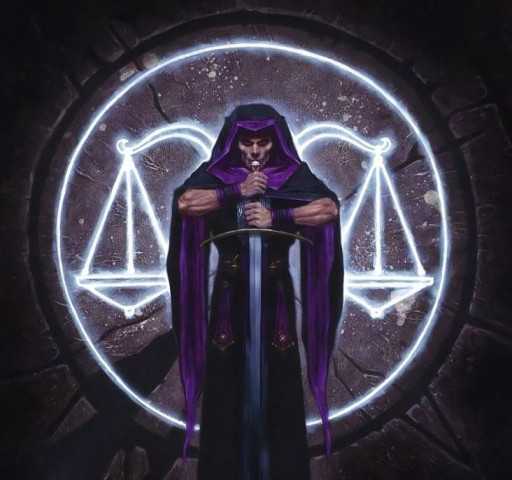
Chronologically the last one on this list to occupy the station of the God of the Dead, Kelemvor also had beginnings as a mortal. The climax of his most definitive adventure ended with him being slain by Cyric atop Blackstaff Tower with his sentient sword, Godsbane, which absorbed Kelemvor’s soul. The sword itself conspired to take down its wielder and recruited Kelemvor to help. This ultimately allowed Kelemvor to escape and he got his revenge against Cyric.
The denizens of the City of the Dead who had helped him with this feat grew such an affinity for Kelemvor that they essentially elected him as a new god. He was even served by the original God of the Dead, Jergal, as a sort of advisor.
- Personality
Those who knew him would describe him as having the heart of a paladin that he hides behind a standoffish and gruff exterior. After his ascension to godhood, he was considered cold but fair, arguably gaining a reputation as less than fearsome.
- Followers and Worshippers
Kelemvor’s worshippers are called The Death Clergy, providing last rites to the dying and facilitating burials for people who died alone. They even go so far as to perform medicine and defend the helpless from premature death. But most especially, they seek to destroy undead as it is an affront to Kelemvor.
- Reasons to choose Kelemvor
- Was capable of slaying a deity while he was yet a mortal (albeit, with Godsbane)
- Commands the respect of the dead, possibly the largest army in existence
- Ranks higher in power as a greater deity than some of his predecessors
- God Details
- Power: Greater Deity
- Alignment: Lawful Neutral
- Symbol: Skeletal arm holding up scales in balance
- Home plane: The Gray Wastes
- Realm: The Bone Castle (the last one to occupy it)
- Portfolio: The Dead
- Domains: Death, Grave
- Channel Divinity: Touch of Death, Path to the Grave
#1. Shar

The Lady of Loss, the Mistress of the Night, Shar is not only the twin sister to the goddess of the moon, Selûne, but she’s one of the oldest deities in D&D’s pantheon. As such, her history is storied with plots and rivalries, including blotting out the sun during the creation of the universe, attempting to usurp Ao to become goddess over all other deities, and murdering the goddess of magic, causing the magic of the Weave to collapse and the Spellplague to ravage the planes.
Shar is a primordial embodiment of darkness and malevolence. She is evil not just because she has chosen to be so, but because it is an inherent fact of her existence in the way shadows are defined by an absence of light. She is the goddess not just of worldly darkness, but of the darkness that dwells in one’s heart. There is no act of cruelty or tinge of hatred that isn’t somehow derived from Shar.
- Personality
Shar ultimately yearns for the calmness of the same void from which she came. She thus seeks for existence to be undone, making her an especially nihilistic and malevolent deity. She is ceaselessly hateful, jealous, sadistic, and enjoys inflicting pain even on her worshippers.
- Followers & Worshippers
In similar fashion to the goddess herself, Shar’s followers are nihilistic and seek the undoing of order. They are sometimes recruited by Shar herself, subverting rival deities and swaying their followers under her instead.
- Reasons to choose Shar
- Is tied for 2nd with her sister as the oldest deity in all creation
- Shar has single handedly slain deities already, including Mystra, goddess of magic and Ibrandul, god of the underground.
- Because Shar is defined as opposed to the the light, It is arguable that under her portfolio is the broad concept of evil entirely.
- God Details
- Power: Greater deity
- Alignment: Neutral Evil
- Symbol: Black disk with a purple border
- Home plane: Hades
- Realm: The Palace of Loss
- Portfolio: Darkness, loss, night, secrets, forgetfulness
- Domains: Death, Trickery
- Channel Divinity: Touch of Death, Invoke Duplicity, Cloak of Shadows

